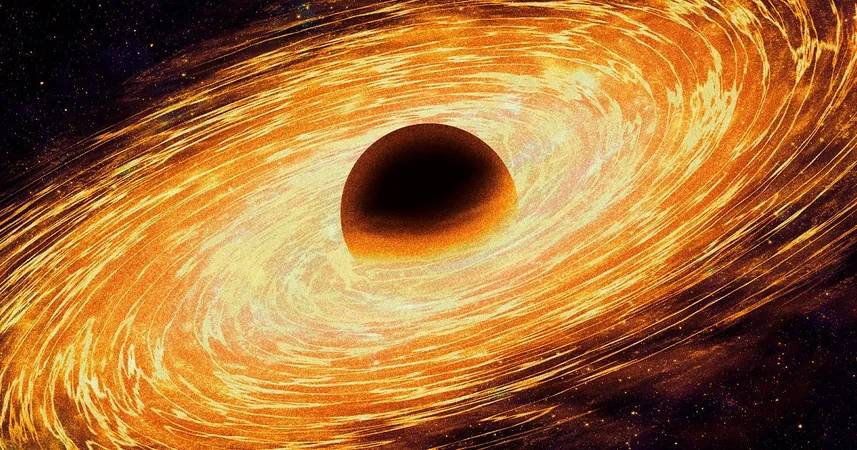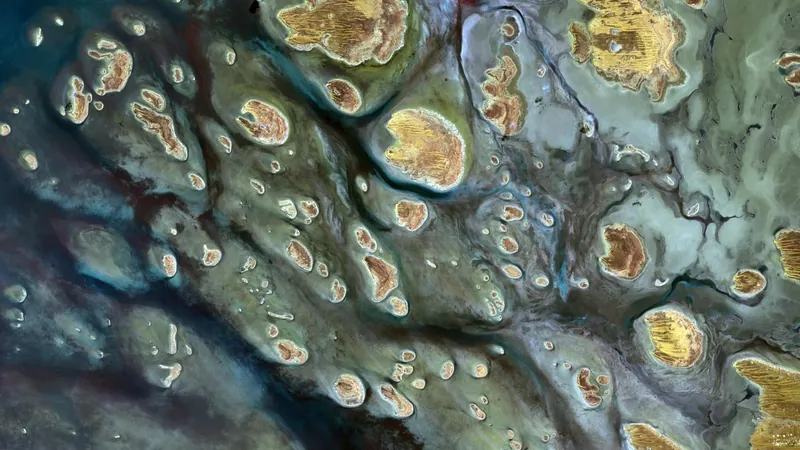
Are Black Holes Just 'Frozen Stars'? New Research Challenges Our Understanding of the Cosmos!
2024-09-28
Author: Wei Ling
The universe never ceases to amaze us with its enigmas, and recent research suggests that black holes—those mysterious cosmic entities—might not be what we thought.
Typically, black holes are considered to be areas of space where gravity is so overwhelming that nothing, not even light, can escape. At their core lies a singularity, a point of infinite density, surrounded by an event horizon which marks the boundary of no return. However, a groundbreaking study published in the journal *Physical Review D* proposes a radical new theory: what if black holes are actually "frozen stars"?
The Frozen Stars Theory
According to this new hypothesis, presented by a team led by physicist Ramy Brustein from Ben-Gurion University, frozen stars could serve as a more straightforward physical explanation for the vast implications of black holes. If these frozen stars indeed exist, they could hold the key to resolving the notorious black hole information paradox first posited by the famous physicist Stephen Hawking.
Brustein explains that frozen stars would not contain singularities or event horizons but would instead be ultracompact objects that emulate all observable characteristics of black holes. This adjustment could necessitate a fundamental rethink of Einstein's theory of general relativity.
The Information Paradox Simplified
One of the most perplexing dilemmas in theoretical physics is the notion of information loss in black holes. Hawking's initial theories suggested that as black holes evaporate over trillions of years due to radiation emitted at their boundaries, they would ultimately obliterate all the information contained within them, defying a core principle of physics: information can be transformed but never destroyed.
The research team argues that if black holes are redefined as frozen stars, this paradox could be resolved. Frozen stars maintain a dense state without collapsing into singularities, thus preserving the information that would otherwise be lost.
The Mechanics Behind Frozen Stars
Imagine an object that behaves like a black hole—absorbing light and matter—but lacks an event horizon. That is the essence of the frozen star concept, which would still interact with anything that strayed too close, drawing in energy without obliterating the existence of the information contained within. According to the findings, these stars would exhibit properties of traditional black holes while providing a new framework for understanding gravitational waves.
Brustein highlights their potential: "We've shown how frozen stars act as nearly perfect absorbers without the gravitational implications of a horizon. They reproduce the same thermodynamic properties as black holes."
Implications for Future Research
This revolutionary hypothesis prompts several questions about the nature of gravity and cosmic evolution, as aligning it with string theory could provide further insight into the fabric of reality. Detecting gravitational waves could ultimately help differentiate between traditional models of black holes and the enigmatic frozen stars if such objects exist.
In a universe filled with mysteries, this new approach could dramatically reshape our understanding of space, time, and the very nature of existence itself. The implications of such findings could resonate throughout physics, potentially upending long-held beliefs about the cosmos as we know it.
Stay tuned, as researchers continue to explore the depths of space, and keep an eye out for the next big breakthrough in our understanding of black holes—or should we say, frozen stars?




 Brasil (PT)
Brasil (PT)
 Canada (EN)
Canada (EN)
 Chile (ES)
Chile (ES)
 España (ES)
España (ES)
 France (FR)
France (FR)
 Hong Kong (EN)
Hong Kong (EN)
 Italia (IT)
Italia (IT)
 日本 (JA)
日本 (JA)
 Magyarország (HU)
Magyarország (HU)
 Norge (NO)
Norge (NO)
 Polska (PL)
Polska (PL)
 Schweiz (DE)
Schweiz (DE)
 Singapore (EN)
Singapore (EN)
 Sverige (SV)
Sverige (SV)
 Suomi (FI)
Suomi (FI)
 Türkiye (TR)
Türkiye (TR)